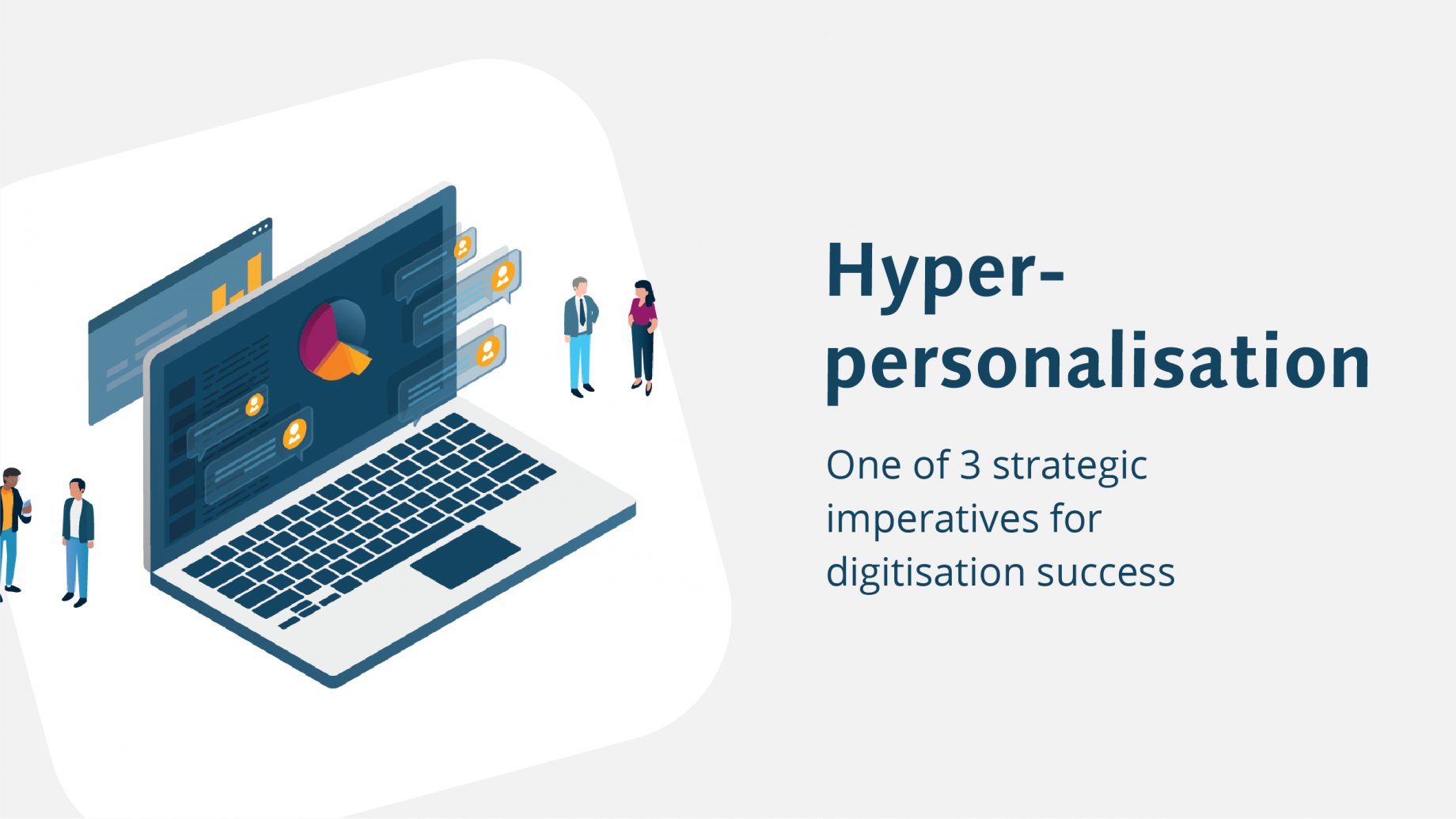
In the first in this series of blogs on our new e-book, "Digitalisation – 3 strategic imperatives for success", we looked at how increased digital adoption is driving initiatives such as hybrid servicing. In this second blog we focus on the second strategic imperative – hyper-personalisation.
With increasing digital adoption relationships, advice, human interaction are all key factors that financial institutions need to consider. With some leading consultancies recommending ‘digitising and humanising’ wealth management and banking services, it’s all about moving from fixed products to bespoke solutions and making them purposeful, fun and relationship driven.
There are many functions and processes in interactions with clients and the client lifecycle where institutions need to think about not only making relevant offers and providing advice based on data, but also achieving a personalised client experience. That’s where hyper-personalisation comes in.
What is hyper-personalisation?
Hyper-personalisation is providing services and/or products to customers and clients that are highly tailored to the individual. While personalisation focuses on increasing relevance through, for example, context and historic data, hyper-personalisation focuses on delivering these with a truly unique, engaging and highly customised experience.
Why is it important?
Hyper-personalisation is not just about what relevant products and services a financial institution offers, but how they are delivered to create a more personalised experience. The scope of hyper personalisation is wide and can incorporate a number of key areas, including:
Personalised product recommendation
Using AI-analytics tools on a client’s past data to make the best possible recommendation.
Personalised portfolio construction
Data analytics and machine learning utilised on the trading history, with targeted asset allocation for those who prefer responsible investing – e.g. environmental, social and governance (ESG) profiles.
Personalised communication
Seamless, multi-channel engagement through conversational banking to engage (with AI-supported chatbots).
Personalised advisory
Use of artificial intelligence.
Risk profiles
Utilising behavioural science and sentiment analysis rather than just a predefined profile.
Use cases
Conversational Banking is a good example of hyper-personalisation. Sample use cases in wealth management range from investor profile questionnaires, to portfolio construction and inheritance planning. In retail banking, they include mortgage processing and pension scheme advice.
For more information you can also download our E-book, "Digitalisation – 3 strategic imperatives for success".




